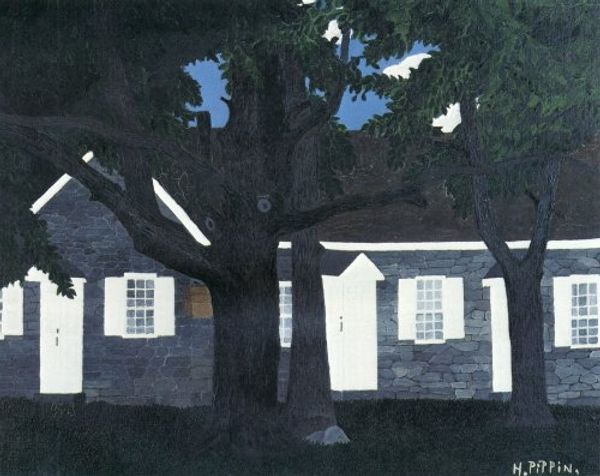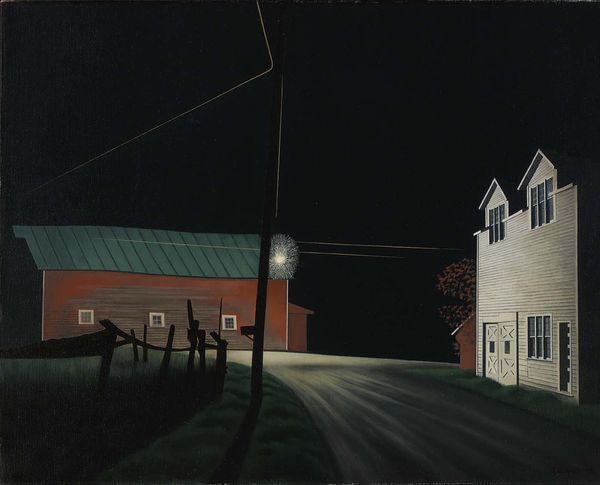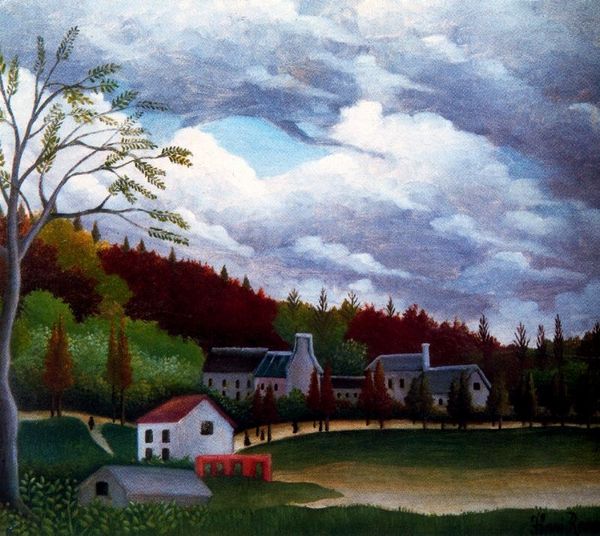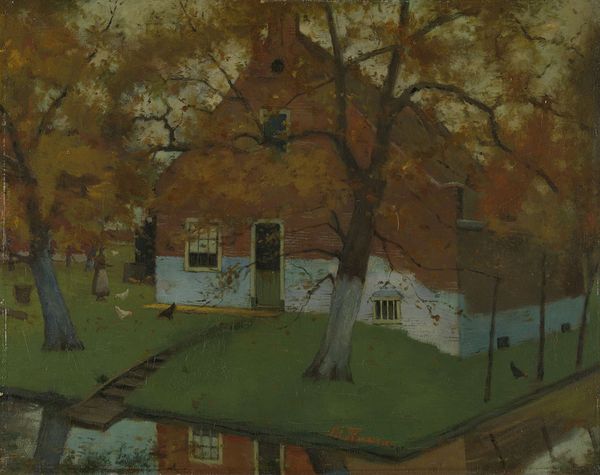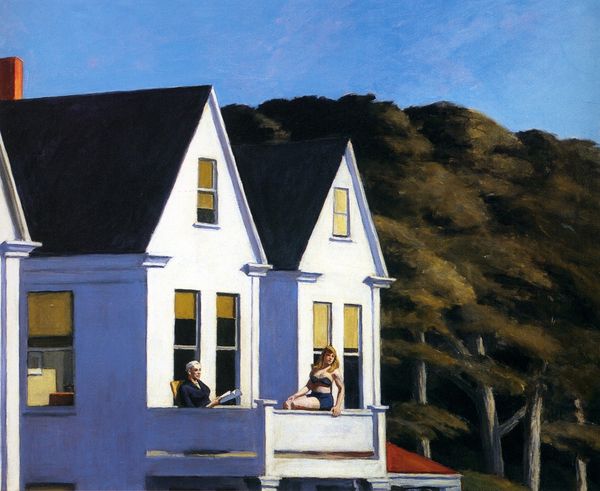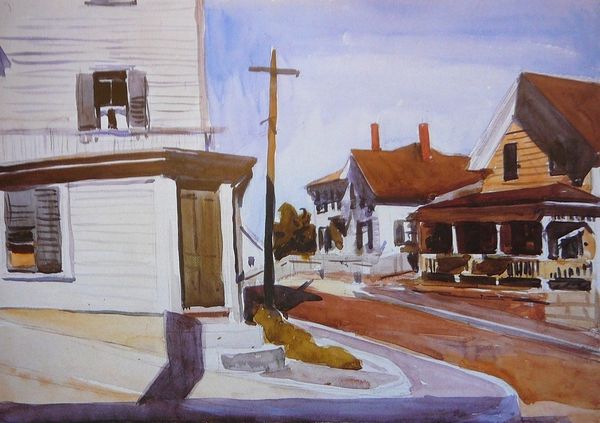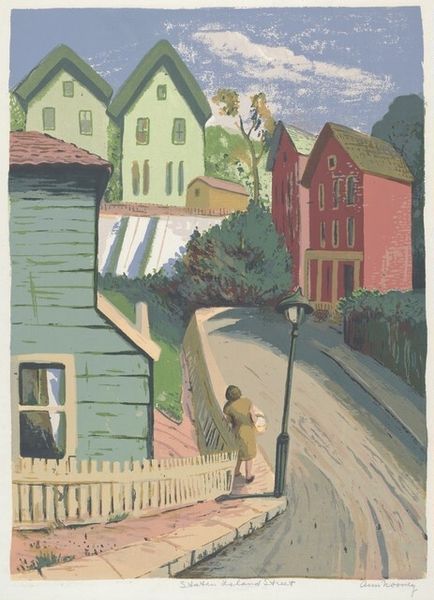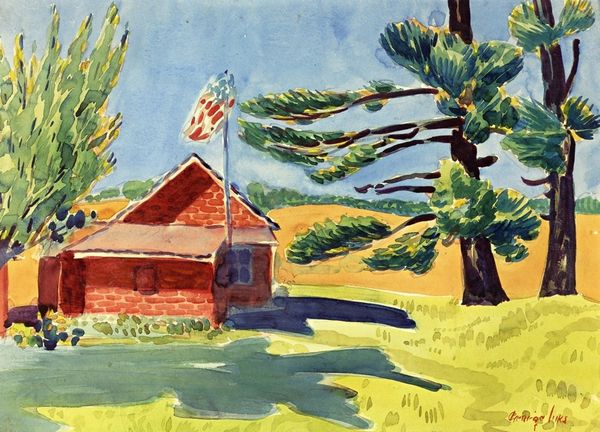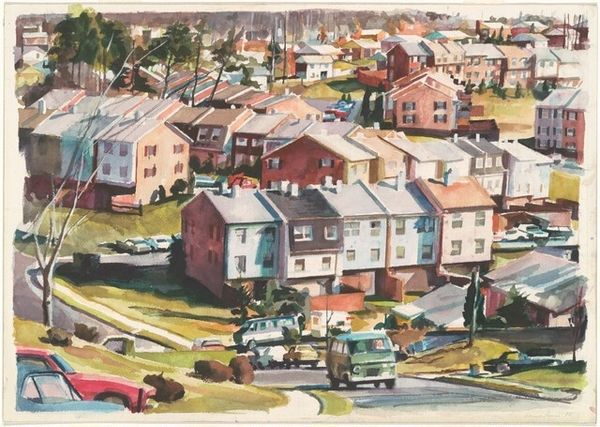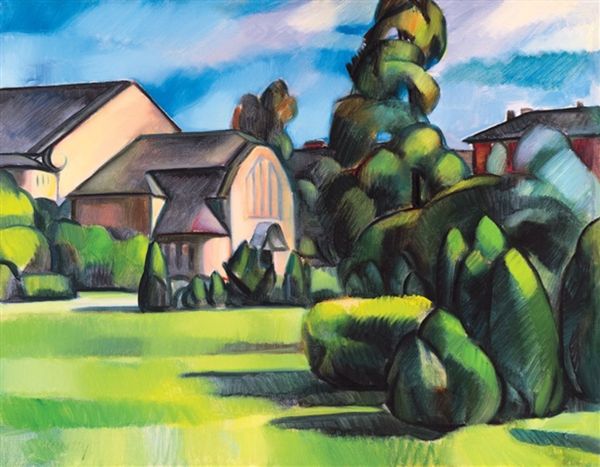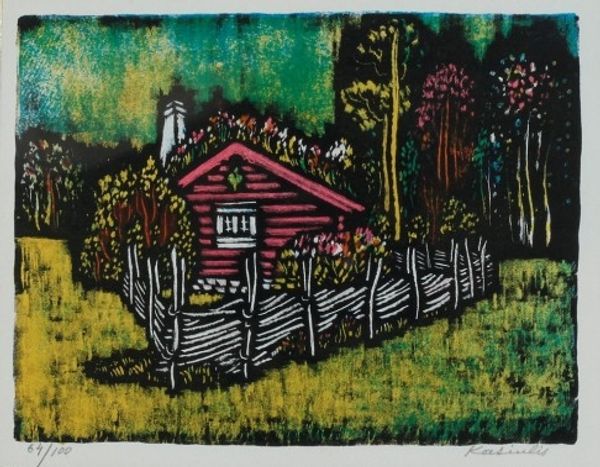
painting, plein-air
#
tree
#
urban landscape
#
painting
#
plein-air
#
landscape
#
house
#
urban cityscape
#
folk-art
#
cityscape
#
realism
Copyright: Public domain
Editor: This is "West Chester, Pennsylvania" by Horace Pippin, a painting showcasing a quaint street scene. There's almost a childlike quality to it in its directness and use of color, particularly the reds of the brick buildings. How would you interpret this piece? Curator: Well, looking at Pippin through a historical lens, particularly regarding the social and institutional contexts of art, reveals much. Pippin was a self-taught African American artist, and his work often reflects themes of war, religion, and racial segregation, which were prominently displayed and became popular during the rise of the Civil Rights movement. Here, we see something quieter but also relevant: an image of a seemingly ordinary street. Editor: It does seem simple on the surface. Curator: Exactly, but think about the context. For a Black artist to paint this kind of "ordinary" scene, especially when considering the limited depictions within American art institutions at the time, carries weight. What stories does it tell by simply depicting where Pippin lived and worked? How does this reflect a desire for representation and normalcy in the face of systemic discrimination? Editor: I see your point. It's a subtle assertion of presence and belonging, using art to claim space. Is that accurate? Curator: Precisely! Furthermore, notice the folk-art style, a conscious choice possibly shaped by his limited formal training, which lends a unique perspective to Realism. Pippin’s paintings found an audience due to shifting attitudes regarding folk art in the mainstream. These became emblems for unrepresented realities. How does that change how you perceive the painting? Editor: It makes me think more deeply about what defines "American art" and whose stories are valued. Curator: Absolutely. Pippin challenges those notions, forcing viewers to confront those issues through his art. It invites discussion around the politics of imagery. Editor: This discussion completely transformed how I view this seemingly simple piece. Now, it embodies profound historical and social narratives. Curator: That's the power of art history—to unearth and amplify the voices within visual works, considering all the social and institutional layers that helped shape them.
Comments
No comments
Be the first to comment and join the conversation on the ultimate creative platform.
